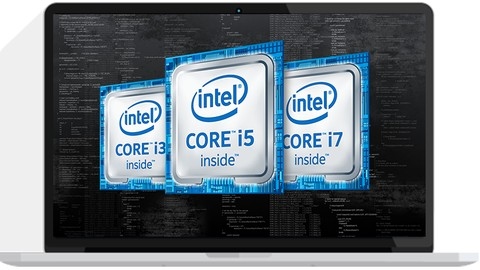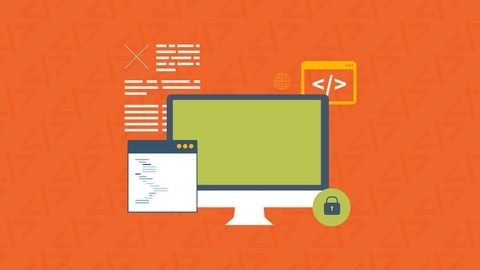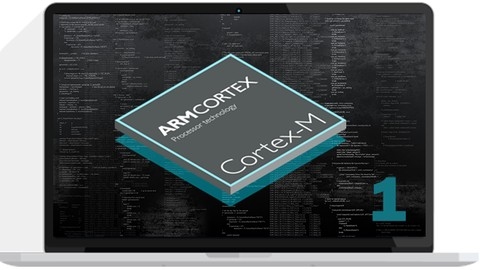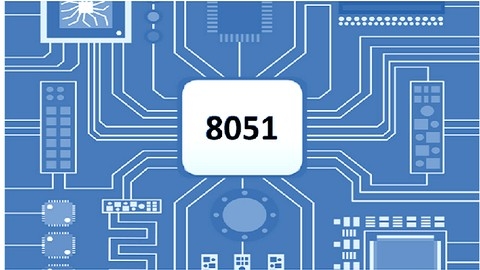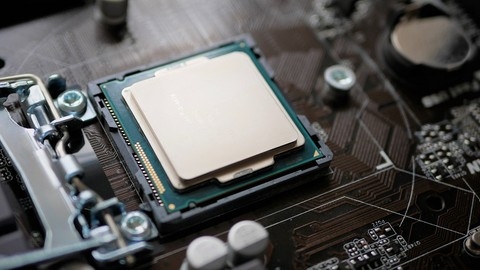Learn Assembly Language by Making Games for the Atari 2600
This course takes you on a journey through the world of assembly programming and game development for the iconic Atari 2600 console.
You’ll start by exploring the hardware architecture and specifications of the Atari 2600, delving into the digital binary system, hexadecimal notation, and the 6502/6507 processor that powers the console.
From there, you’ll dive into the fundamentals of 6502 assembly programming, learning about the assembler flow, popular instructions, and addressing modes.
The course provides hands-on experience by guiding you through installing the necessary tools, such as a code editor, the DASM assembler, and emulators like Stella and Javatari.
As you progress, you’ll gain a deep understanding of the Atari 2600’s memory map and the Television Interface Adapter (TIA), which controls the display.
You’ll learn how to paint the CRT, work with TIA objects like players, missiles, balls, and the playfield, and master techniques for horizontal and vertical positioning of these objects.
The course covers essential concepts like representing graphics data, handling controller input, using bitwise operations, implementing subroutines, stack, and pointers.
You’ll even explore undocumented opcodes and learn how to generate random numbers, which are crucial for game development.
Hands-on projects are a key part of the learning experience.
You’ll start by creating your first assembly code and debugging your first assembly bug.
As you progress, you’ll embark on a final project where you’ll define playfield and player graphics, implement movement and positioning, handle joystick input, create sprite animations, and implement enemy movements, collisions, scoreboards, and timers.
The course also delves into advanced topics like asymmetric playfields, BCD decimal mode, missiles, macros, audio programming, and scanline analysis using debugging tools like Gopher2600.
You’ll learn how to optimize your code by counting clock cycles and explore addressing mode errors.
Throughout the course, you’ll be exposed to a wealth of resources, including examples of disassembled and commented code, copyright and content distribution guidelines, and information about other related courses.
x86 Assembly Language Programming From Ground Up™
You’ll start by setting up your development environment and learning about the evolution of Intel processors, computer architectures, and the fundamental building blocks like logic gates and transistors.
From there, you’ll dive into the core concepts of assembly language, including number systems, data types, registers, flags, memory models, and operating modes.
The course covers essential instructions like data transfer, arithmetic, logic, conditional branching, and looping.
You’ll learn how to work with arrays, strings, and even explore advanced topics like floating-point arithmetic using the FPU, SIMD operations with MMX and SSE extensions, and the powerful AVX instruction set.
Throughout the course, you’ll get hands-on experience with coding exercises that reinforce the concepts.
You’ll learn how to mix assembly with C/C++, understand calling conventions, and experiment with different addressing modes.
The course also includes case studies and algorithms like temperature conversion, sphere computation, and least squares, allowing you to apply your skills to real-world problems.
One of the unique aspects of this course is its focus on the x86 architecture, providing you with a deep understanding of how modern processors work.
You’ll explore the programmer’s model, microcomputer design, and the evolution of Intel processors, giving you a solid foundation for low-level programming.
You’ll gain valuable skills in low-level programming, optimization techniques, and a deeper understanding of how computers operate at the hardware level.
Assembly Language Adventures: Complete Course
You will start by learning the fundamentals of binary and hexadecimal number systems, including signed number representations like two’s complement.
Next, you’ll dive into the x86 architecture, exploring its history, structure, and essential instructions for arithmetic, branching, and bitwise operations.
The course extensively covers memory management concepts, data structures like arrays and strings, and string manipulation instructions.
A significant portion is dedicated to understanding subroutines, the stack, and calling conventions – crucial concepts for writing modular code.
You’ll also learn to navigate official instruction manuals from Intel and AMD.
The course equips you with debugging skills using the powerful WinDbg debugger.
You’ll learn to set software and hardware breakpoints, inspect program state, and handle exceptions.
Finally, you’ll gain hands-on experience with the Windows API, making system calls for file I/O, console operations, and creating GUI applications with MessageBox.
Throughout the course, you’ll use the FASM assembler to write and assemble programs, reinforcing your understanding with numerous examples and exercises.
The course strikes a balance between theory and practical application, ensuring you grasp assembly language programming comprehensively.
ARM Assembly Language From Ground Up™ 1
The course starts with an introduction to the ARM architecture, its design philosophy, and how it differs from other architectures like x86.
You’ll learn about the various ARM processor families, including Cortex-A, Cortex-R, and the widely used Cortex-M series for embedded systems.
The course dives deep into the programmer’s model, covering data types, processor modes, registers, and the vector table.
You’ll understand the ARM data flow model, the pipeline, and how instructions are executed.
The course covers all the essential instruction sets, including ARM, Thumb, and Thumb-2, along with assembler rules and directives.
You’ll learn how to code in assembly, starting with simple projects and gradually moving to more complex ones.
The course covers load/store instructions, dealing with constants and literals, arithmetic and logic instructions, shifts, rotations, and bit manipulation.
You’ll also learn about branches, loops, conditional execution, and working with tables and lookup tables.
The course teaches you how to work with the stack, including saving and restoring context.
It also covers the floating-point unit and how to mix C and assembly code.
You’ll develop peripheral drivers for popular boards like the STM32F411 Discovery, STM32 Nucleo, and TM4C123 Tiva C.
The course covers important data structures like FIFOs and algorithms like the recursive factorial, Taylor series expansion, reciprocal square root estimation, and the bisection method.
You’ll also learn about finite state machines and their implementation using the Moore model.
Finally, the course guides you through setting up the popular Keil uVision 5 IDE for ARM development.
8051 Microcontroller - Embedded C and Assembly Language
You will start by learning the fundamentals of microcontrollers and how they differ from microprocessors.
The course covers the 8051 architecture, pin diagram, crystal frequency, and machine cycles in detail.
Moving on, you’ll dive into the 8051’s input/output ports, including pull-up and pull-down registers, and how to configure and work with ports P0, P1, P2, and P3.
For those new to digital systems, the course provides a solid foundation by covering number systems and binary logic.
The course then introduces you to embedded C programming, guiding you through installing the Keil IDE and Proteus simulation software.
You’ll learn about the 8051 C compiler, program structure, data types, operators, and how to write code in embedded C.
Crucially, the course teaches you how to burn programs into the 8051 microcontroller, covering topics like bootloaders, ISP, microcontroller burners, and the step-by-step burning process.
Assembly language programming is a significant part of the course.
You’ll learn how it relates to embedded C, the working of assemblers, and how assembly code translates to machine code.
The course covers memory organization, registers, addressing modes, and instructions like call, jump, RET, and DJNZ in the 8051.
You’ll also learn about assembler directives and how to write code in assembly language, including generating precise delays.
The course covers interfacing with various hardware components, such as LCDs, timers, counters, serial communication, interrupts, 7-segment displays, stepper motors, relays, DC motors, buzzers, and analog-to-digital converters.
You’ll learn how to program these components using both embedded C and assembly language.
Additionally, you’ll work on projects like speed control of a DC motor and LED dimming using pulse-width modulation (PWM), as well as wireless control of LEDs using a smartphone and the HC-05 Bluetooth module.
The course also includes bonus lectures on bit masking, bit extracting, and bit monitoring in embedded C, as well as interview questions and answers to help you prepare for internships and job interviews.
x86 Assembly Language Programming Masters Course
This course covers assembly programming for both legacy and modern x86 architectures.
It starts with the fundamentals of assembly language and the 8086 processor, teaching you how to install an emulator and write your first “Hello World” program.
You’ll dive deep into the inner workings of processors, learning about transistors, logic gates, registers, segmentation, and the stack.
The course explains how to move data between memory and registers, handle interrupts, and communicate with hardware using the in and out instructions.
It covers essential topics like mathematics operations, condition instructions, and data transfer with lodsb and stosb.
After mastering the 8086, the course transitions to modern x86 processors.
You’ll learn how to install the necessary assembler dependencies and write x86 assembly code.
The course teaches you how to integrate assembly with C programs, manage local variables, return and pass structures, and work with pointers in assembly.
One standout feature is the section on receiving input from the keyboard, allowing you to create interactive programs.
Throughout the course, you’ll have access to helpful resources to reinforce your understanding of each concept.
ARM Raspberry Pi Assembly Language From Ground Up™
This course provides a comprehensive introduction to ARM assembly language programming on the Raspberry Pi.
You will start by learning the fundamentals of computing devices, number systems, and assembly tools.
The course then dives into the RISC design philosophy behind ARM processors and explores ARM’s unique features like bus technology, memory management, and coprocessor extensions.
To get hands-on, you’ll learn how to remotely access your Raspberry Pi using SSH or Remote Desktop Connection, and set up the CodeBlocks IDE for writing assembly code.
The programmer’s model section covers essential concepts like data types, registers, data flow, and the ARM processor family.
You’ll gain a solid understanding of assembler rules, directives, and the different ARM instruction sets.
The course teaches you how to assemble, link, run, and debug programs using the Raspberry Pi terminal and the GDB debugger.
Coding examples reinforce concepts like allocating memory, swapping registers, and renaming registers.
Load-store instructions form a crucial part, covering pre/post-indexed addressing, endianness, and defining memory areas.
You’ll learn techniques for dealing with constants and literals, such as using the MOV instruction’s rotation scheme, MOVW/MOVT instructions, and loading labels with ADR/LDR.
The arithmetic and logic section explores flags, boolean operations, shifts, rotations, addition, subtraction, bit manipulation, saturated math, multiplication, and division instructions.
You’ll also learn about DSP instructions and fractional/Q notation.
Branching and looping are essential for control flow, so you’ll study branch instructions, compare-and-branch, loops, and conditional execution.
The course covers working with tables, including navigating lookup tables.
Finally, you’ll learn about the stack and related instructions like LDM, STM, PUSH, and POP.
Coding examples integrate multiple concepts, like solving equations and finding maximum values in datasets.
x86 64-bit Assembly Language: Step-by-Step Tutorial
The course starts with an introduction to computer architecture and data representation, covering essential concepts like number systems and ASCII strings.
This lays a solid foundation for understanding assembly language.
You’ll then dive into the basics of assembly language, learning how to install the necessary tools, assemble and link programs, and debug them.
The course covers defining variables and constants, providing a hands-on approach to writing your first assembly programs.
From there, you’ll explore the x86-64 assembly language in depth, covering data transfer instructions like mov and xchg, as well as arithmetic instructions like add, sub, inc, dec, and neg.
You’ll also learn about flags and how they’re affected by these instructions.
The course then dives into bitwise operations with instructions like and, or, xor, and not, giving you a comprehensive understanding of manipulating data at the bit level.
Branching instructions like jmp and conditional branching are covered next, allowing you to control program flow.
You’ll learn about arrays and addressing modes, including immediate, register, direct, indirect, and RIP-relative addressing.
The course also covers endianness, an important concept in assembly language.
Multiplication and division instructions like mul, div, imul, and idiv are explored, along with shift and rotate instructions for efficient data manipulation.
String instructions like movs, stos, lods, scas, and cmps are also covered, enabling you to work with strings in assembly.
The course then delves into stack and procedures, teaching you about the stack, call and ret instructions, nested procedure calls, passing parameters, and local variables.
You’ll also learn about the Microsoft x64 calling convention.
Finally, the course covers macros, both single-line and multi-line, as well as I/O macros for input and output operations.
Assembly Language Programming for Reverse Engineering
This course teaches assembly language programming in the context of reverse engineering, making it ideal for cybersecurity professionals, malware analysts, and software developers looking to understand low-level programming.
It starts with the basics, like number systems and installing the necessary tools, before diving into core assembly concepts like registers, memory access, and arithmetic instructions.
You’ll learn how to use the xdbg debugger and perform tasks like hollowing out executable files.
The course covers essential skills like pushing and popping values to the stack, making function calls, and handling input/output operations.
It even touches on more advanced topics like code caves, where you can insert your own code into an existing program.
One of the highlights is the calculator project, which will have you designing and coding a fully functional calculator in assembly language.
This hands-on exercise will solidify your understanding of the concepts covered.
You’ll explore flags, jumps, comparisons, and structured programming constructs like loops and if-else statements.
It also covers signed operations, bitwise manipulation, memory arrays, and data structures.
String instructions, like LODS and MOVS, are covered in depth, along with creating your own functions using CALL and RET.
You’ll learn about calling conventions, stack frames, and traversing the call stack.
The course even touches on the Windows API, with practicals on functions like ReadFile, WriteFile, and CreateFile.
External functions are also covered, providing you with the skills to interact with external libraries.
Throughout the course, you’ll find plenty of exercises and practicals to reinforce the concepts.
Assembly Language: Learn Assembly Programming Fast In 2020
You’ll start with an introduction to assembly and its motivation, learning how it differs from high-level programming languages.
Next, you’ll dive into the basics of assembly instructions, including arithmetic operations and other constructs like data types and conditional jumps.
The course provides exercises and code examples to reinforce these concepts, ensuring you get hands-on practice.
As you progress, you’ll explore more advanced topics like structured programming, registers, memory addressing, and the stack.
You’ll learn about flags and conditional code execution, which are essential for writing efficient assembly programs.
The course also covers optimization techniques, branching, and cycles, equipping you with the skills to write high-performance code.
You’ll learn about subroutines, the program stack, and recursion, with exercises to solidify your understanding of function calls.
Finally, the course delves into pure assembly programming, where you’ll apply everything you’ve learned to write complete programs in assembly language.
Throughout the course, you’ll find articles that provide in-depth explanations of key concepts, ensuring you have a solid grasp of the material.
The exercises and code examples are designed to reinforce your learning and provide practical experience.


